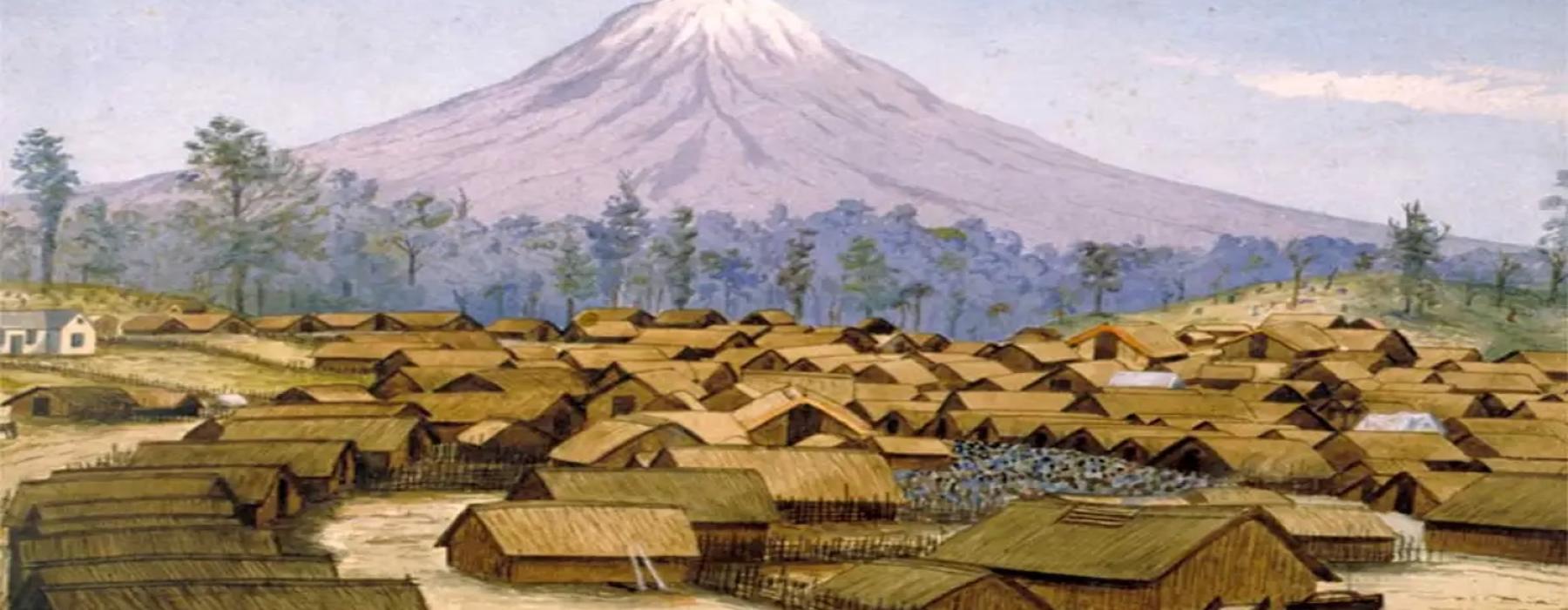
Honouring and Celebrating Parihaka
In 1881, Parihaka had come to symbolise peaceful resistance to the confiscation of Māori land. Founded in the mid-1860s, the western Taranaki village attracted dispossessed and disillusioned Māori from around the country. They were impressed by the kaupapa of its main leaders, Te Whiti-o-Rongomai and Tohu Kākahi, both of the Taranaki and Te Āti Awa iwi. Te Whiti and Tohu developed tactics of non-violent resistance to confiscation.
On 5 November, about 1600 volunteers and Constabulary Field Force troops marched on Parihaka. Several thousand Māori sat quietly on the marae as singing children greeted the force led by Native Minister John Bryce. The Whanganui farmer viewed Parihaka as a ‘headquarters of fanaticism and disaffection’. Bryce ordered the arrest of Parihaka’s leaders, the destruction of much of the village and the dispersal of most of its inhabitants. The Sim Commission which investigated these events in the 1920s was told that women were raped by troops, with some bearing children as a result.
Individual Friends have long upheld the cause of Parihaka. Meetings organised commemorations to remember the grave injustice and to support the call for recognition of it by the Crown. With the Crown apology being given in 2017 and restitution made, celebrations continue in recognition of the peaceful, non-violent resistance observed by the people of Parihaka in 1881 and since, and to educate New Zealanders about this history.